Abstract
Clostridium botulinum spores were sublethally damaged by exposure to 12 or 28 micrograms of available chlorine per ml for 2 min at 25 degrees C and pH 7.0. The damaging dose was 2.7 x 10(-6) to 3.1 x 10(-6) micrograms of available chlorine per spore. Damage was manifested by a consistent 1.6 to 2.4 log difference between the most probable number enumeration of spores (modified peptone colloid medium) and the colony count (modified peptone yeast extract glucose agar); this did not occur with control spores. Damaged spores could be enumerated by the colony count procedure. Germination responses were measured in several defined and nondefined media. Hypochlorite treatment altered the rate and extent of germination in some of the media. Calcium lactate (9 mM) permitted L-alanine (4.5 mM) germination of hypochlorite-treated spores in a medium containing 12 or 55 mM sodium bicarbonate, 0.8 mM sodium thiosulfate, and 100 mM Tris-hydrochloride (pH 7.0) buffer. Tryptose inhibited L-alanine germination of the spores. Treatments with hypochlorite and with hydrogen peroxide (7%, 25 degrees C, 2 min) caused similar enumeration and germination responses, indicating that the effect was due to a general oxidation phenomenon.
Full text
PDF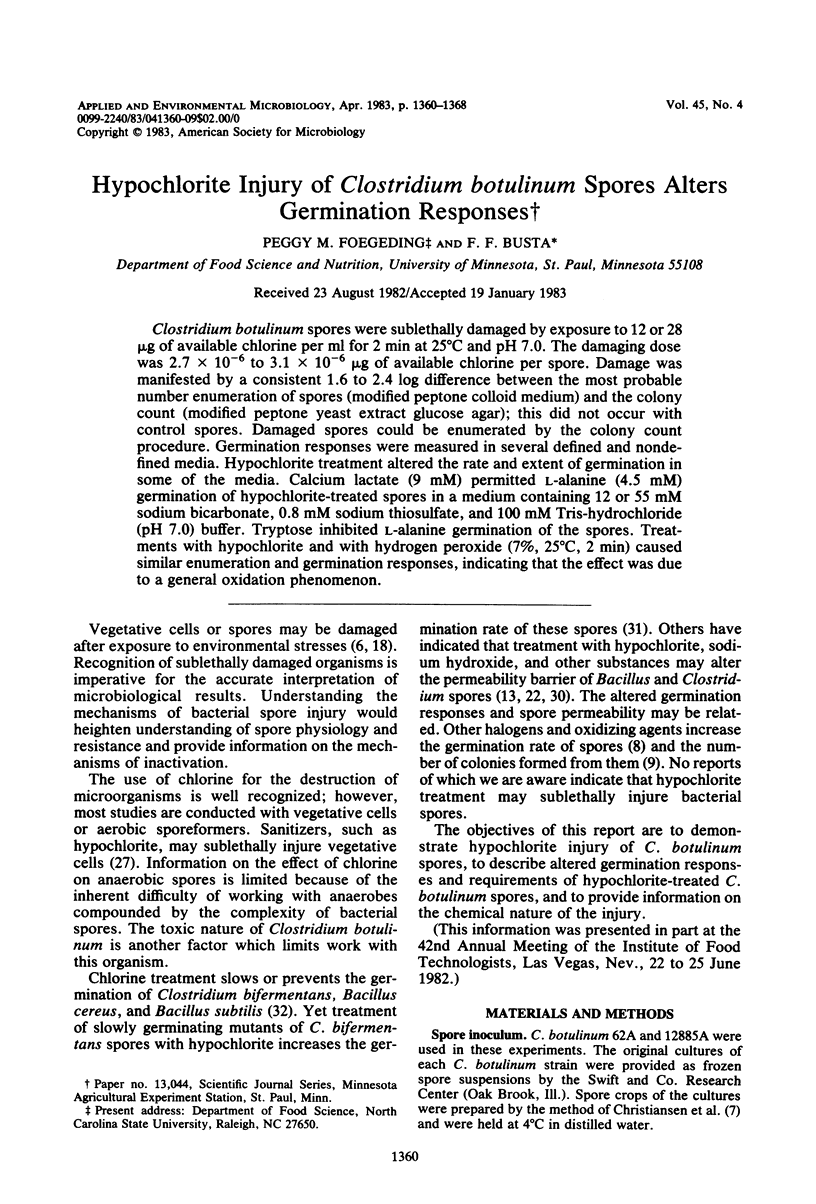
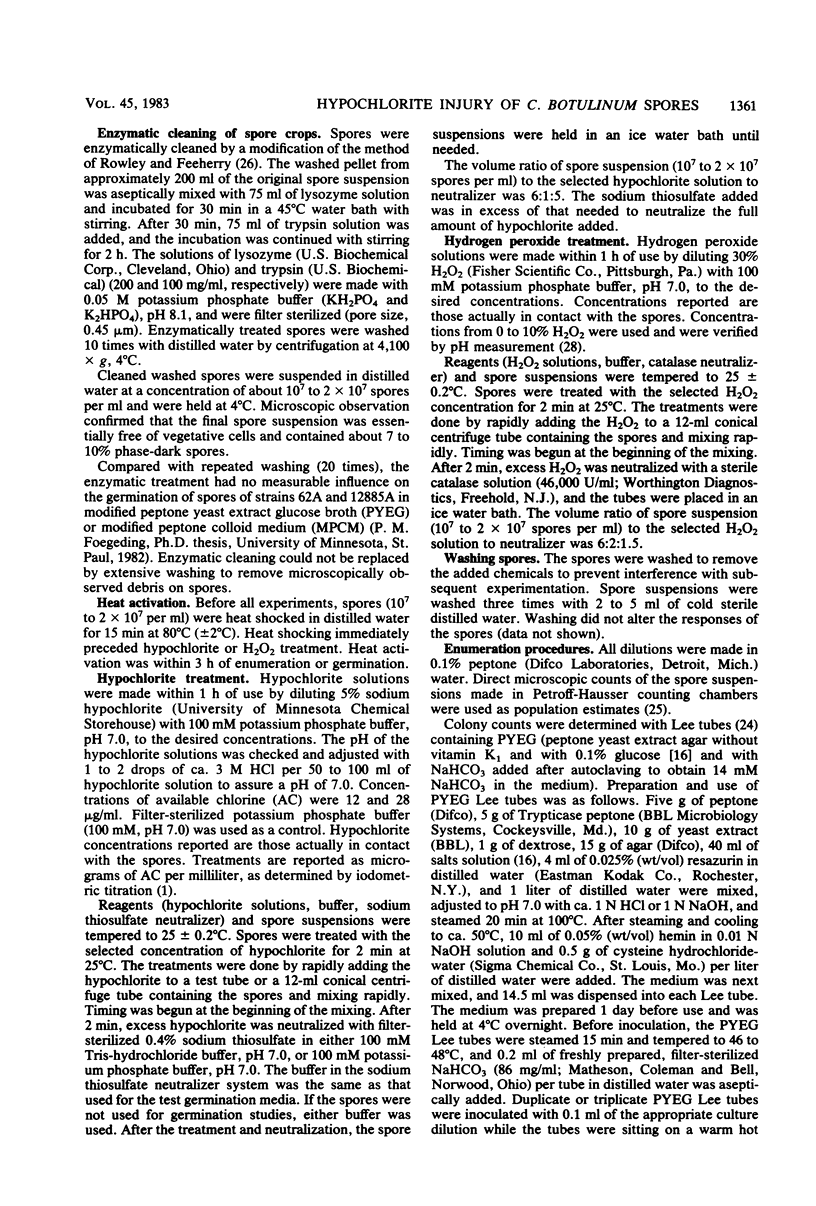
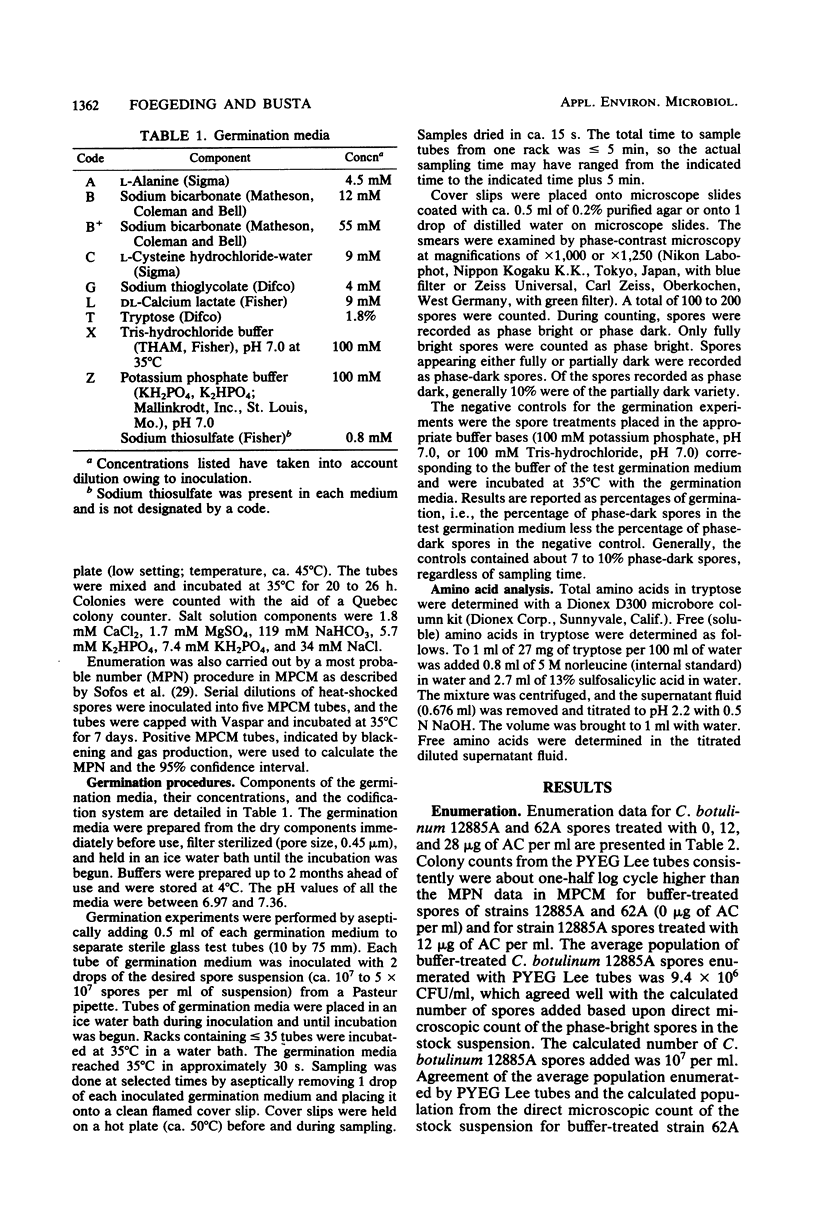
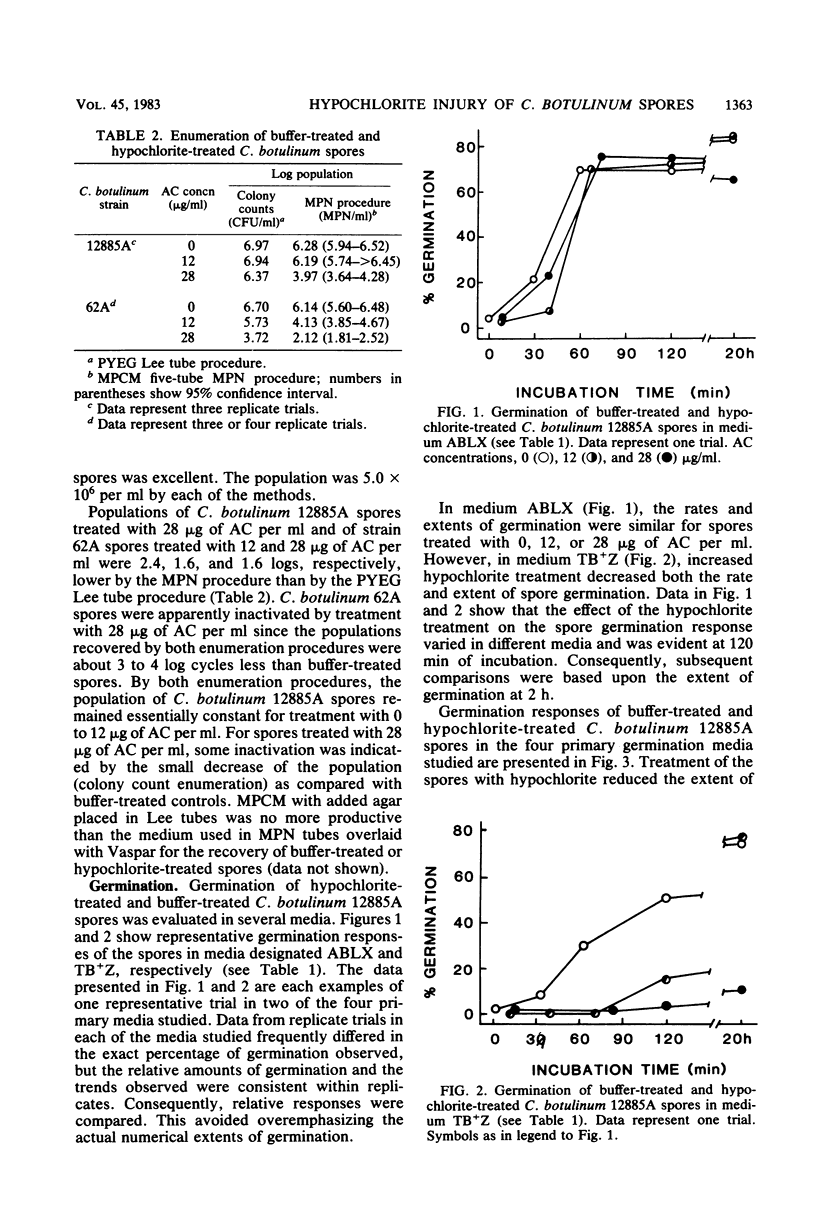
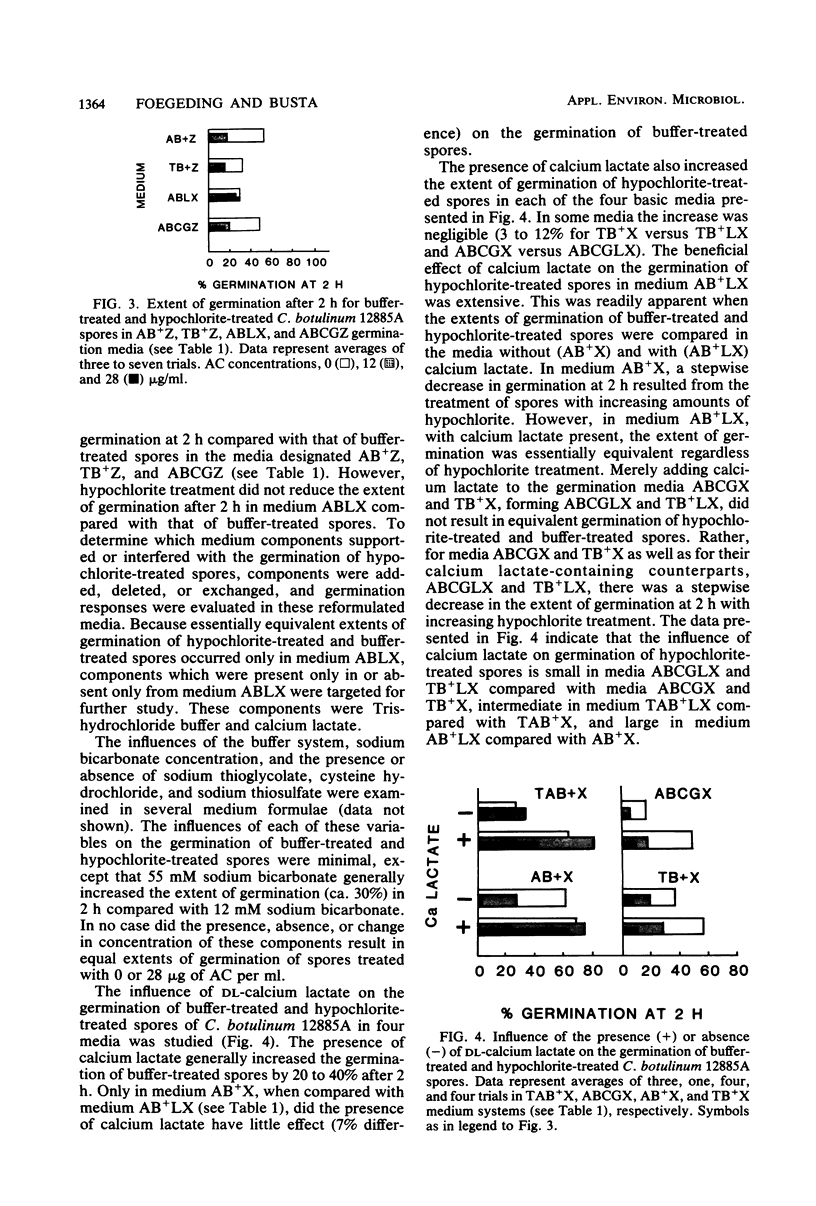
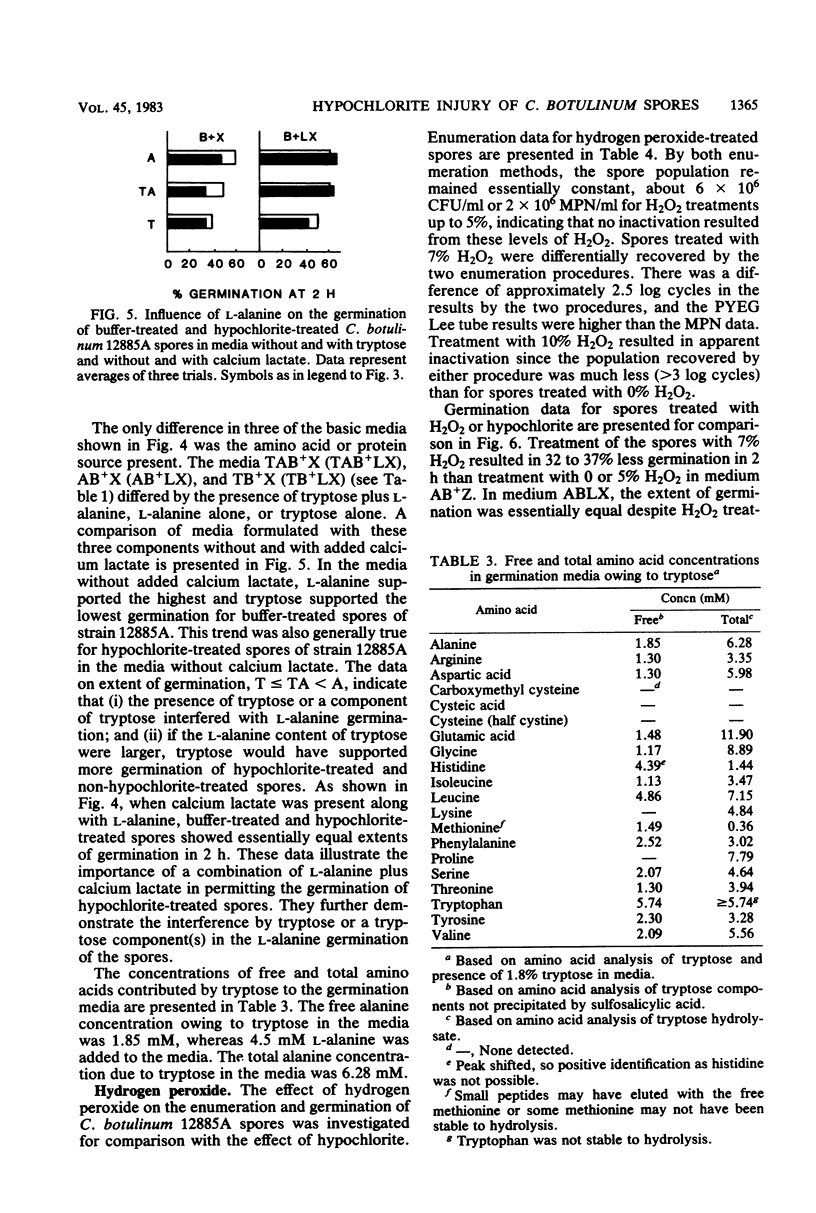
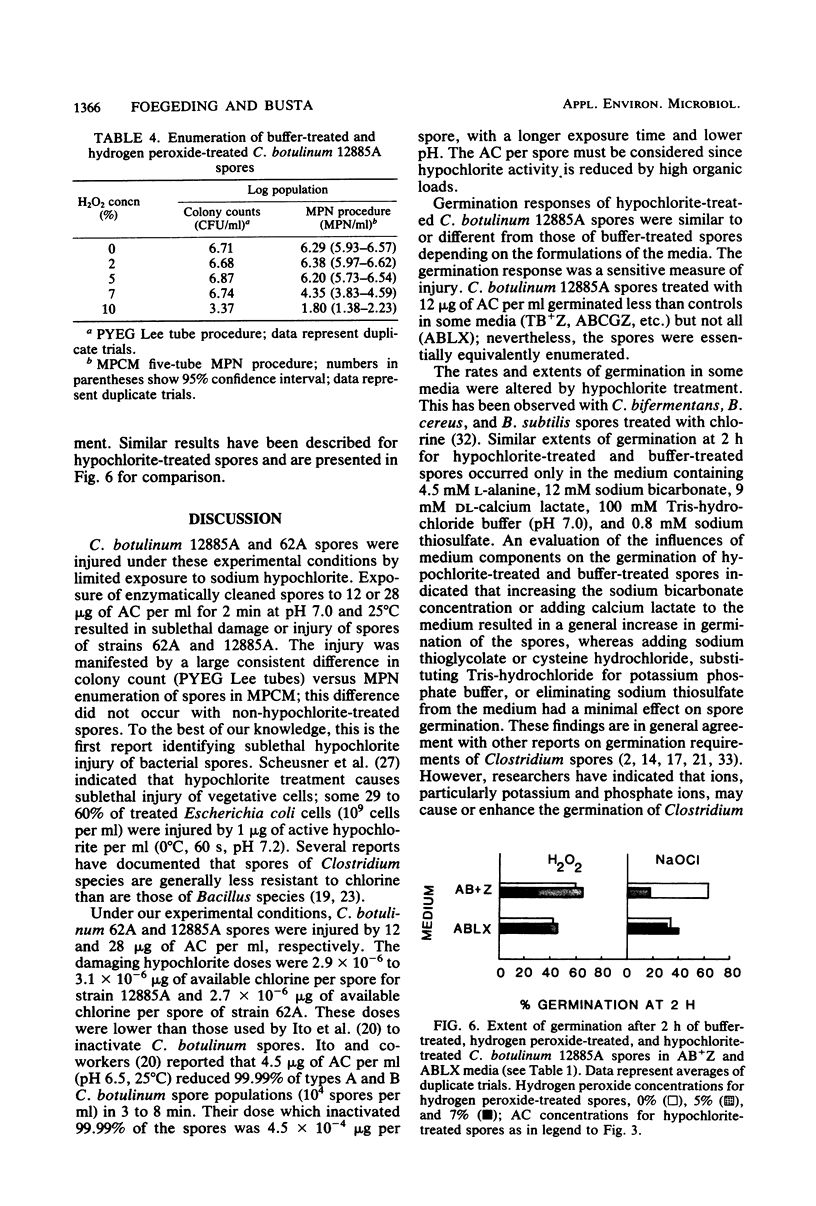
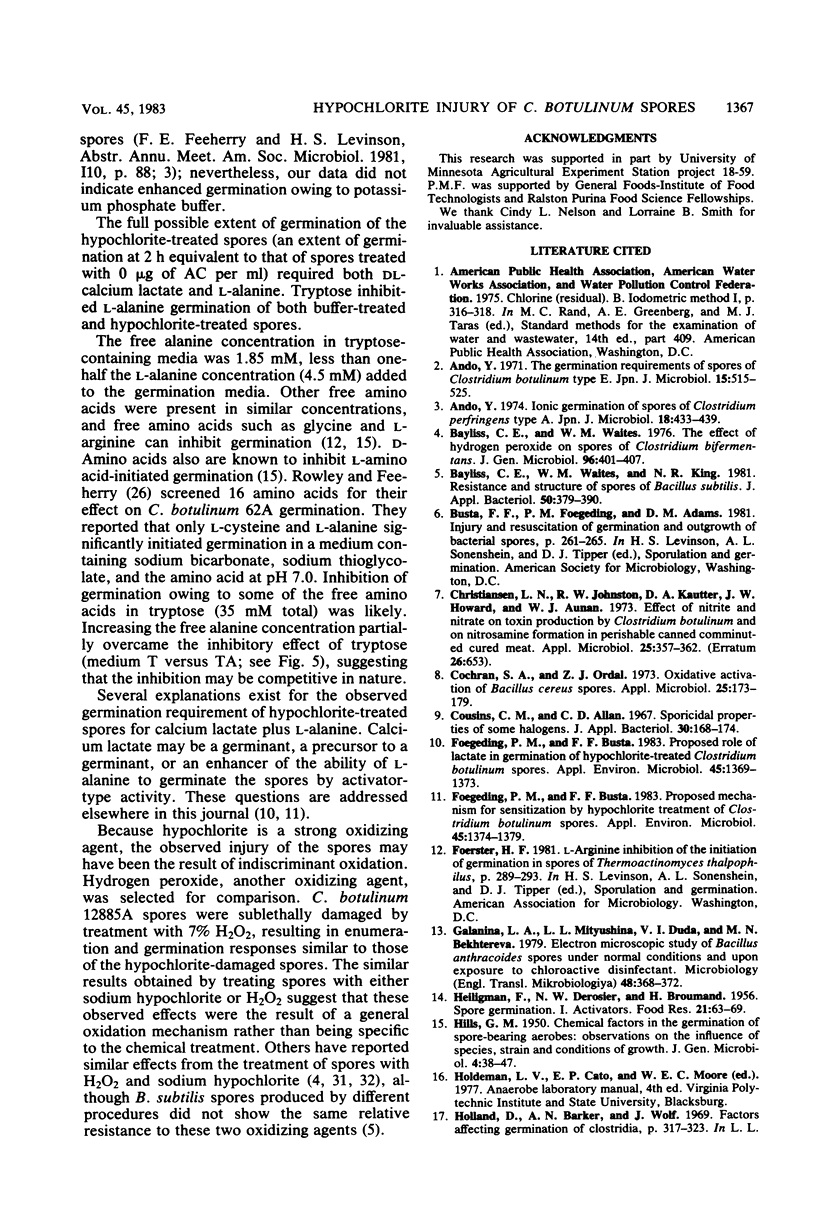
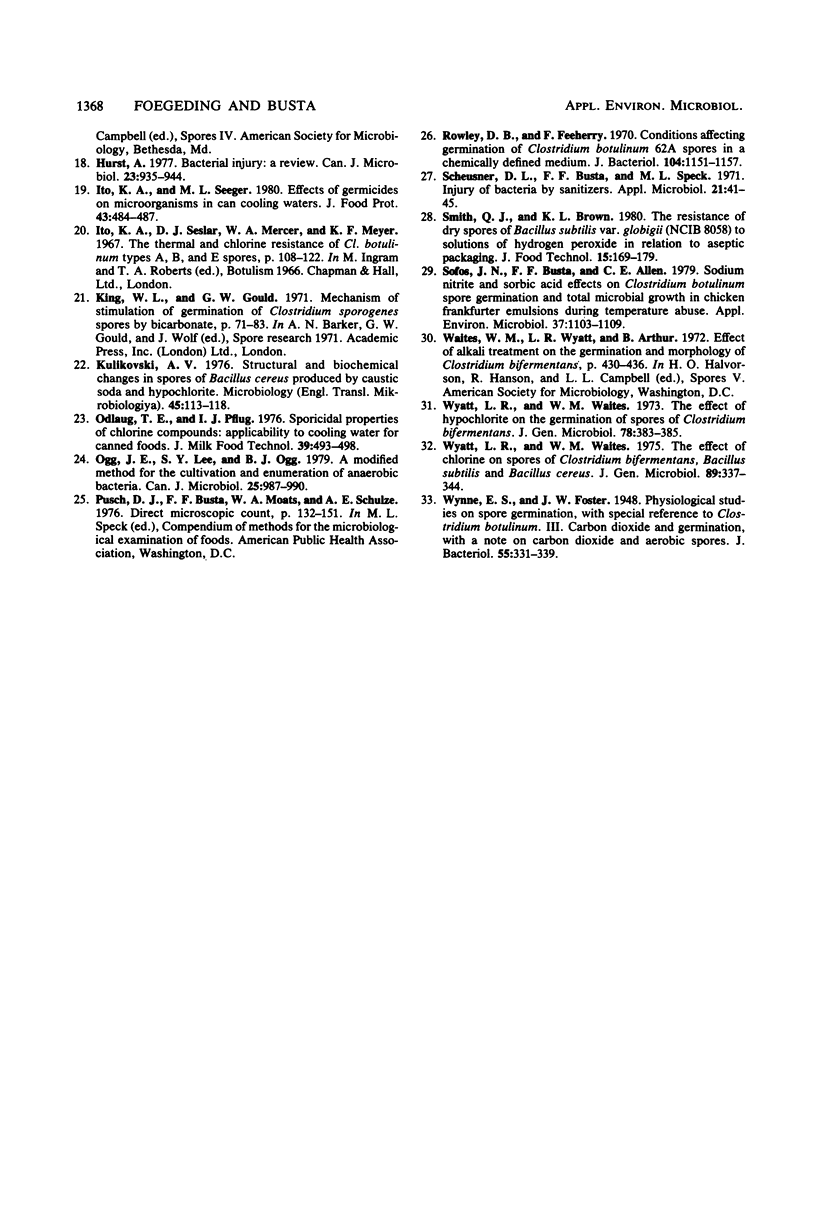
Selected References
These references are in PubMed. This may not be the complete list of references from this article.
- Ando Y. Ionic germination of spores of Clostridium perfringens type A. Jpn J Microbiol. 1974 Nov;18(6):433–439. doi: 10.1111/j.1348-0421.1974.tb00831.x. [DOI] [PubMed] [Google Scholar]
- Ando Y. The germination requirements of spores of Clostridium botulinum type E. Jpn J Microbiol. 1971 Nov;15(6):515–525. doi: 10.1111/j.1348-0421.1971.tb00613.x. [DOI] [PubMed] [Google Scholar]
- Bayliss C. E., Waites W. M. The effect of hydrogen peroxide on spores of Clostridium bifermentans. J Gen Microbiol. 1976 Oct;96(2):401–407. doi: 10.1099/00221287-96-2-401. [DOI] [PubMed] [Google Scholar]
- Christiansen L. N., Johnston R. W., Kautter D. A., Howard J. W., Aunan W. J. Effect of nitrite and nitrate on toxin production by Clostridium botulinum and on nitrosamine formation in perishable canned comminuted cured meat. Appl Microbiol. 1973 Mar;25(3):357–362. doi: 10.1128/am.25.3.357-362.1973. [DOI] [PMC free article] [PubMed] [Google Scholar]
- Cochran S. A., Ordal Z. J. Oxidative activation of Bacillus cereus spores. Appl Microbiol. 1973 Feb;25(2):173–179. doi: 10.1128/am.25.2.173-179.1973. [DOI] [PMC free article] [PubMed] [Google Scholar]
- Cousins C. M., Allan C. D. Sporicidal properties of some halogens. J Appl Bacteriol. 1967 Apr;30(1):168–174. doi: 10.1111/j.1365-2672.1967.tb00286.x. [DOI] [PubMed] [Google Scholar]
- Foegeding P. M., Busta F. F. Proposed mechanism for sensitization by hypochlorite treatment of Clostridium botulinum spores. Appl Environ Microbiol. 1983 Apr;45(4):1374–1379. doi: 10.1128/aem.45.4.1374-1379.1983. [DOI] [PMC free article] [PubMed] [Google Scholar]
- Foegeding P. M., Busta F. F. Proposed role of lactate in germination of hypochlorite-treated Clostridium botulinum spores. Appl Environ Microbiol. 1983 Apr;45(4):1369–1373. doi: 10.1128/aem.45.4.1369-1373.1983. [DOI] [PMC free article] [PubMed] [Google Scholar]
- HILLS G. M. Chemical factors in the germination of spore-bearing aerobes: observations on the influence of species, strain and conditions of growth. J Gen Microbiol. 1950 Jan;4(1):38–47. doi: 10.1099/00221287-4-1-38. [DOI] [PubMed] [Google Scholar]
- Hurst A. Bacterial injury: a review. Can J Microbiol. 1977 Aug;23(8):935–944. doi: 10.1139/m77-139. [DOI] [PubMed] [Google Scholar]
- Ogg J. E., Lee S. Y., Ogg B. J. A modified tube method for the cultivation and enumeration of anaerobic bacteria. Can J Microbiol. 1979 Sep;25(9):987–990. doi: 10.1139/m79-151. [DOI] [PubMed] [Google Scholar]
- Rowley D. B., Feeherry F. Conditions Affecting Germination of Clostridium botulinum 62A Spores in a Chemically Defined Medium. J Bacteriol. 1970 Dec;104(3):1151–1157. doi: 10.1128/jb.104.3.1151-1157.1970. [DOI] [PMC free article] [PubMed] [Google Scholar]
- Scheusner D. L., Busta F. F., Speck M. L. Injury of bacteria by sanitizers. Appl Microbiol. 1971 Jan;21(1):41–45. doi: 10.1128/am.21.1.41-45.1971. [DOI] [PMC free article] [PubMed] [Google Scholar]
- Sofos J. N., Busta F. F., Allen C. E. Sodium nitrite and sorbic acid effects on Clostridium botulinum spore germination and total microbial growth in chicken frankfurter emulsions during temperature abuse. Appl Environ Microbiol. 1979 Jun;37(6):1103–1109. doi: 10.1128/aem.37.6.1103-1109.1979. [DOI] [PMC free article] [PubMed] [Google Scholar]
- Wyatt L. R., Waites W. M. The effect of chlorine on spores of Clostridium bifermentans, Bacillus subtilis and Bacillus cereus. J Gen Microbiol. 1975 Aug;89(2):337–344. doi: 10.1099/00221287-89-2-337. [DOI] [PubMed] [Google Scholar]
- Wyatt L. R., Waites W. M. The effect of hypochlorite on the germination of spores of Clostridium bifermentans. J Gen Microbiol. 1973 Oct;78(2):383–385. doi: 10.1099/00221287-78-2-383. [DOI] [PubMed] [Google Scholar]
- Wynne E. S., Foster J. W. Physiological Studies on Spore Germination, with Special Reference to Clostridium botulinum: III. Carbon Dioxide and Germination, with a Note on Carbon Dioxide and Aerobic Spores. J Bacteriol. 1948 Mar;55(3):331–339. [PMC free article] [PubMed] [Google Scholar]


